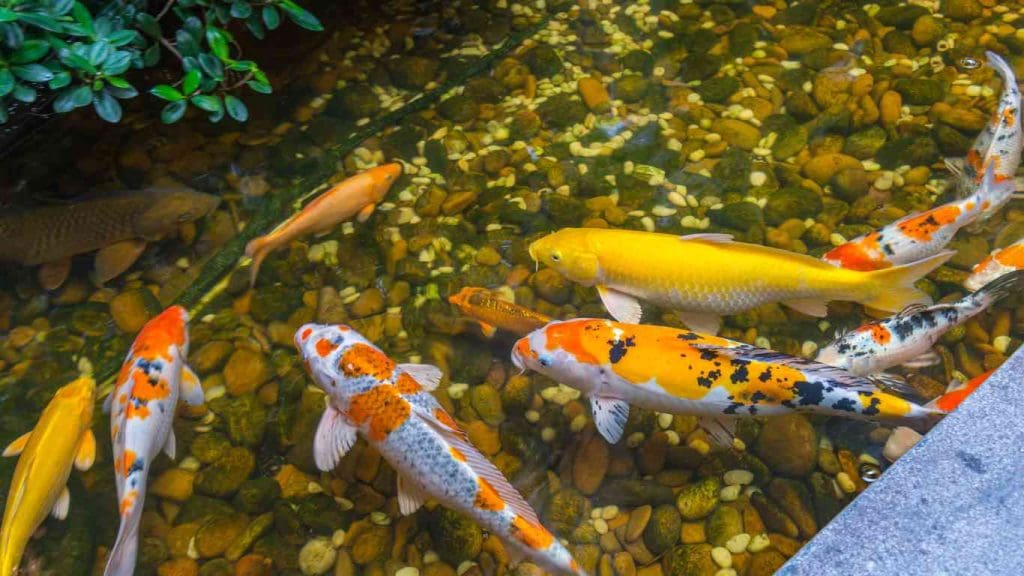If you’re considering building a koi pond, you may be wondering whether or not to include gravel in the design. Gravel in Koi Pond can provide several benefits to your pond, but it also has its drawbacks. Ultimately, the decision to include gravel in your koi pond will depend on several factors, including the size of your pond, the type of gravel you choose, and your maintenance commitment.
One of the main benefits of using gravel in your koi pond is its aesthetic appeal. Gravel in Koi Pond can add texture and depth, making the pond look more natural and beautiful. It also comes in a variety of colors, which can help create an eye-catching focal point. However, it’s important to choose the right type of gravel for your pond, as some types can negatively impact the water quality and harm your koi.
Gravel Gist: The Essentials
When considering whether or not to put gravel in your koi pond, there are several key takeaways to keep in mind:
Overall, whether or not to put gravel in your koi pond is a personal choice that depends on your specific circumstances and preferences. Consider the benefits and drawbacks carefully before making a decision, and be sure to properly maintain your pond if you do choose to use gravel.
Understanding Koi Ponds
If you’re considering building a koi pond, it’s important to understand the basics of what’s involved. Koi ponds are designed to provide a healthy environment for koi fish to thrive. They’re typically larger than regular fish ponds, and they require a bit more maintenance and attention.
When building a koi pond, there are several factors to consider, including the size, location, and design. Koi ponds should be at least 1,000 gallons in size, and they should be located in an area that receives partial shade throughout the day. This will help to regulate the water temperature and prevent algae growth.
Koi ponds should also be designed with a filtration system to keep the water clean and clear. There are several types of filtration systems available, including mechanical, biological, and chemical. Mechanical filters remove debris and particles from the water, while biological filters use beneficial bacteria to break down waste and pollutants. Chemical filters use chemicals to remove impurities from the water.
Moreover to a filtration system, koi ponds should also have aeration to help oxygenate the water. This can be achieved with the use of a waterfall, fountain, or air pump.
When it comes to adding gravel to your koi pond, there are pros and cons to consider. Gravel can provide a natural look to your pond and act as a biological filter, helping to break down waste and pollutants. However, it can also make it more difficult to clean the pond and may trap debris.
Ultimately, the decision to add gravel in koi pond is up to you. It’s important to weigh the benefits and drawbacks and decide what’s best for your specific situation. If you do decide to add gravel, make sure to choose a type that is safe for koi fish and won’t affect the pH balance of the water.
The Role of Gravel in Koi Ponds
When it comes to setting up a koi pond, one of the most common questions is whether or not to add gravel. While it’s not a requirement, adding gravel in koi pond can offer several advantages that enhance both the aesthetic appeal and functionality of your pond. Here are some reasons why you might want to consider adding gravel in koi pond:
Biological Filtration
One of the primary benefits of adding gravel to your koi pond is that it can act as a biological filter. The gravel provides a substrate for beneficial bacteria to grow, which then helps to break down harmful ammonia and nitrite in the water. This process is known as the nitrogen cycle, and it’s essential for maintaining healthy water conditions for your koi.


JOIN OUR COMMUNITY AND GET A FREE E-BOOK
Aesthetics
Another reason people choose to add gravel to their koi pond is for aesthetic purposes. The addition of gravel can give your pond a more natural look, mimicking the appearance of a riverbed or a natural habitat for koi fish. The small stones can also add texture and depth to your pond, making it more visually appealing.
Hiding Places for Koi
Koi fish are known for their love of hiding places, and adding gravel to your pond can create more spots for them to explore and hide. The gravel can also provide a substrate for aquatic plants, which can offer additional hiding places and shade for your koi.
Overall, adding gravel in koi pond is a personal choice that depends on your preferences and needs. While it’s not necessary, it can offer several benefits that enhance both the aesthetic appeal and functionality of your pond. If you do decide to add gravel, be sure to choose a type that is safe for your koi and won’t leach harmful chemicals into the water.
Potential Drawbacks
When considering whether or not to put gravel in your koi pond, it’s essential to weigh the potential drawbacks against the benefits. Some of the potential drawbacks of adding gravel in koi pond include maintenance challenges and a risk of injury to your koi.
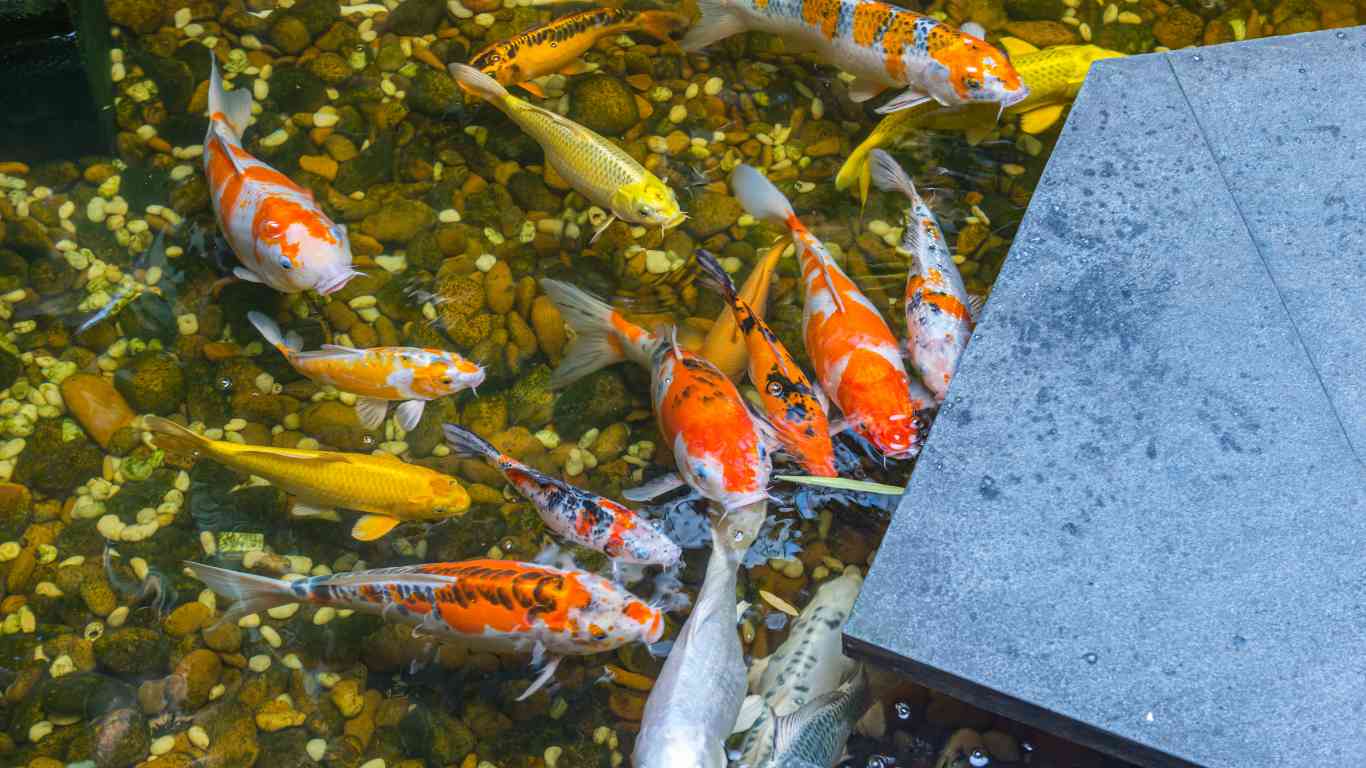

Maintenance Challenges
One of the most significant drawbacks of adding gravel in koi pond is the increased maintenance required. Gravel can trap debris and organic matter, which can lead to water quality issues if not adequately cleaned. Additionally, gravel can make it more challenging to vacuum or clean the bottom of your pond, which can be time-consuming and labor-intensive.
Risk of Injury to Koi
Another potential drawback of adding gravel in koi pond is the risk of injury to your fish. Koi are bottom feeders and can injure themselves on sharp or rough gravel. Additionally, gravel can harbor harmful bacteria and parasites, which can infect your fish and lead to health problems.
To minimize the risk of injury to your koi, it’s essential to choose the right type of gravel and ensure that it’s properly installed. Pea gravel is the most commonly used type of gravel in koi ponds, as it’s smooth and won’t harm your fish. Additionally, it’s essential to regularly inspect your pond for any signs of injury or infection and take prompt action if necessary.
Overall, while adding gravel in koi pond can provide aesthetic appeal and some benefits, it’s essential to carefully consider the potential drawbacks before making a decision. By weighing the pros and cons and taking steps to minimize any risks, you can create a healthy and beautiful environment for your koi to thrive.
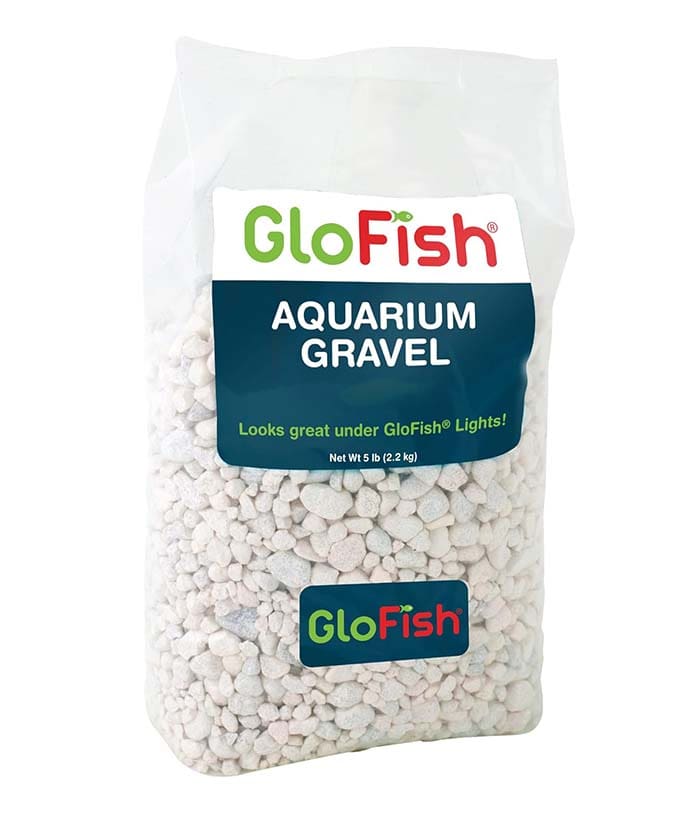

GloFish Koi Pond Gravel
Considerations Before Adding Gravel
When it comes to deciding whether or not to add gravel in koi pond, there are several factors to consider. Here are some important considerations to keep in mind before adding gravel to your pond.
Type of Gravel
The type of gravel you choose for your koi pond is important. You should choose gravel that is smooth-edged and won’t harm your fish. Sharp or rough gravel can scratch or injure your koi’s fins and barbels. To minimize the risk of injury, consider using sand or a bare bottom pond instead of gravel.
Size of Gravel
The size of the gravel you use in your koi pond is also important. Small gravel can be accidentally ingested by your fish, especially if they are young or small. This can cause health problems for your fish and potentially harm them. It’s best to avoid using gravel altogether if you have young or small fish.
Quantity of Gravel
The amount of gravel you add to your koi pond should also be considered. Adding too much gravel can make cleaning your pond more difficult and time-consuming. It can also alter the water chemistry in your pond, which can be harmful to your fish. It’s best to add only a thin layer of gravel to your pond, just enough to provide a natural-looking environment for your fish.
In brief, when deciding whether or not to add gravel in koi pond, consider the type, size, and quantity of gravel you use. Smooth-edged gravel, avoiding small gravel, and using only a thin layer can help provide a natural-looking environment for your fish without harming them or making maintenance more difficult.
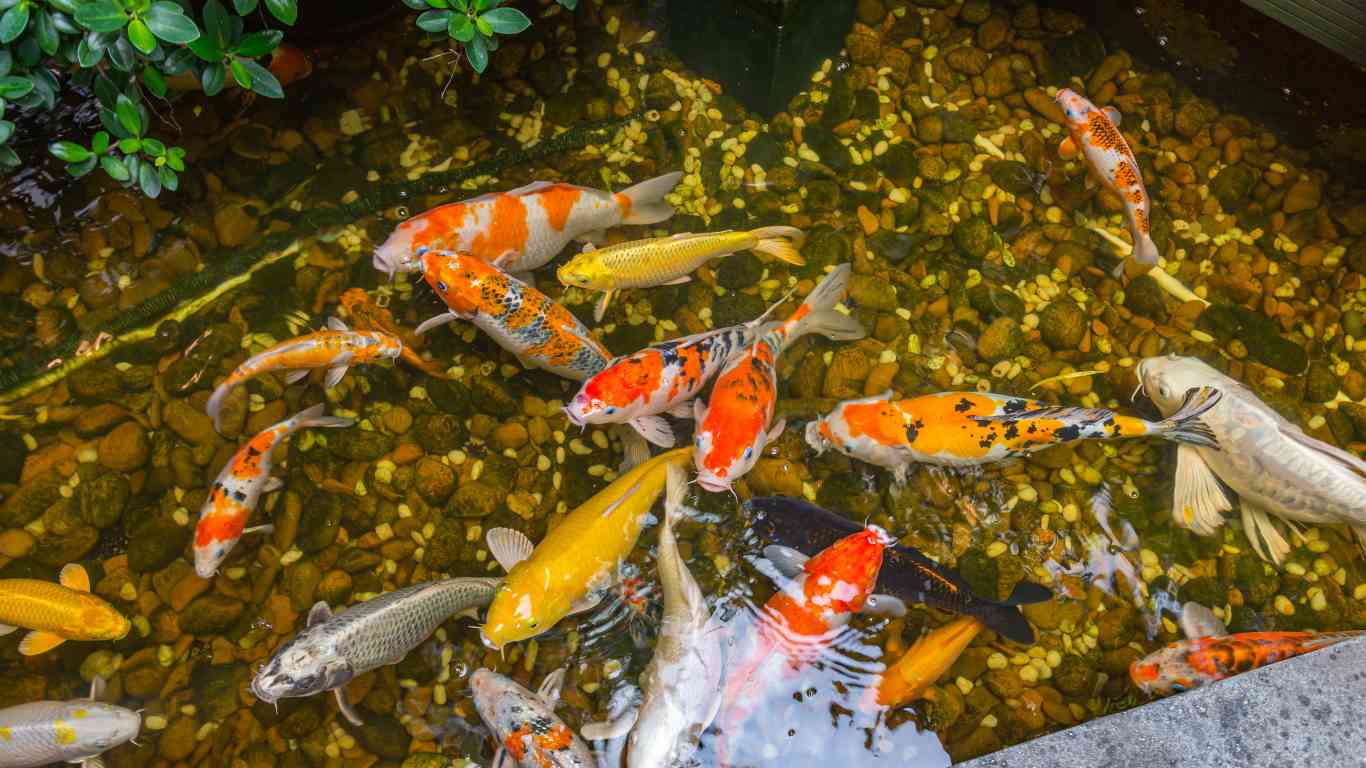

How to Add Gravel to Your Koi Pond
Adding gravel in koi pond can provide several benefits, including a natural-looking environment for your fish and a substrate for good bacteria to grow. Here are a few steps to follow when adding gravel in koi pond:
- Clean the Gravel: Before adding gravel in your koi pond, make sure to rinse it thoroughly to remove any dust, dirt, or debris. This will help prevent any unwanted particles from entering the water and potentially harming your fish.
- Choose the Right Size: It’s important to choose the right size of gravel for your koi pond. Larger gravel can provide a more natural look, but it can also make it difficult for your fish to swim and for waste to be removed. Smaller gravel can help with waste removal, but it can also be easily sucked up by your filtration system.
- Add the Gravel: Once you’ve cleaned and chosen the right size of gravel, it’s time to add it to your koi pond. Start by adding a layer of gravel to the bottom of your pond, making sure to cover all areas evenly. You can also add gravel around the edges of your pond to create a more natural look.
- Maintain the Gravel: To keep your gravel clean and prevent it from becoming clogged with waste, it’s important to maintain it regularly. This can include stirring up the gravel periodically to encourage sediment to make its way into the filter, and removing any debris or waste that accumulates on the surface.
By following these simple steps, you can add gravel in koi pond and enjoy the benefits of a natural-looking environment and improved water quality.
Alternatives to Gravel in Koi Ponds
If you’re looking for alternatives to gravel in your koi pond, there are a few options to consider. Here are some alternatives to gravel you might want to consider:
Sand
Sand is an alternative to gravel that many people consider. It’s a natural-looking substrate that can be used in the bottom of your koi pond. Sand is also easy to clean and maintain, making it a great option for those who want a low-maintenance pond.
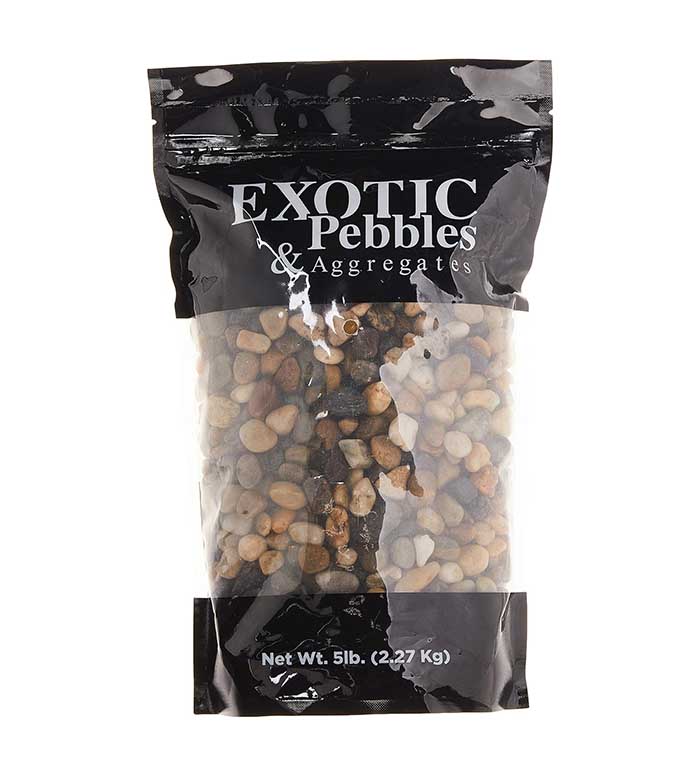

Premium Gravel and Substrate for Koi Pond
Bare Liner
A bare liner pond is another option to consider if you’re looking for an alternative to gravel. Without rocks or gravel in your pond, tasks like vacuuming or water changes will be a lot easier, eliminating the nooks and crevices for organic materials to settle. However, keep in mind that a bare liner pond may not be as aesthetically pleasing as one with gravel.
Limestone Gravel
Limestone gravel is another option to consider. The basic properties in the calcium carbonate can help to regulate the pond’s pH. However, keep in mind that the limestone will dissolve over time. Also, any rock choice that is rough or jagged can cause problems for both the pond liner and the koi fish.
Pea Gravel
Pea gravel is another alternative to consider. It’s a smaller size than regular gravel, which makes it easier to clean. Pea gravel is also less likely to cause damage to the pond liner or the koi fish.
When considering alternatives to gravel in your koi pond, it’s important to keep in mind the needs of your koi fish. Whatever substrate you choose, make sure it’s safe for your fish and won’t cause any harm to their health.
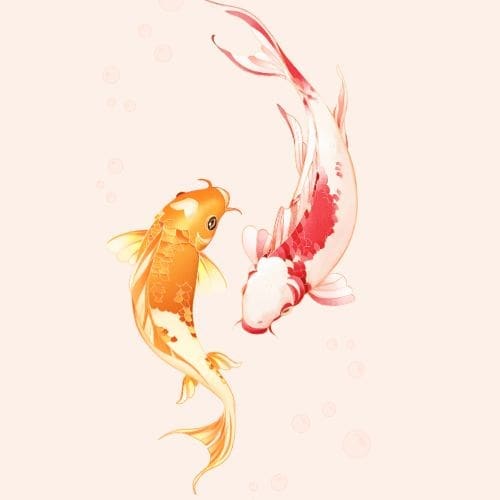

Get the Information You Need!
Join Us and Ask an Expert
Should I Put Gravel in My Koi Pond
In the end, whether or not to put gravel in your koi pond is a personal decision that depends on various factors. Gravel in Koi Pond can enhance the visual appeal of your pond and provide biological filtration benefits but requires careful consideration and regular maintenance.
If you decide to use gravel, make sure to choose the right size and type of gravel that won’t harm your koi. Also, ensure that the gravel is clean and free of any debris or harmful substances before adding it to your pond.
Regular maintenance is crucial when using Gravel in Koi Pond. You should clean the gravel regularly to prevent the buildup of debris and waste that can harm your koi. You can use a pond vacuum or a siphon to clean the gravel.
Lastly, keep in mind that gravel can also make it harder to catch your koi if you need to move them or perform any maintenance tasks. So, if you prefer easy access to your koi, you may want to consider not using gravel.
Overall, the decision to use gravel in your koi pond should be based on your personal preferences, aesthetics, and maintenance commitment. With proper care and maintenance, gravel can be a great addition to your koi pond.
Frequently Asked Questions
What is the best thing to Put in the bottom of a koi pond?
The best thing to put in the bottom of a koi pond is a pond liner. This will create a barrier between the pond water and the ground below, preventing any toxins or pollutants from seeping into the water. A pond liner will also make it easier to clean the pond.
Do koi fish like gravel?
Koi fish do not require gravel as a substrate, but some people feel that adding gravel can help to keep the fish healthy. Koi do not have gills and cannot breathe in mud or sand, so gravel is a good option as a substrate. However, it is important to choose a type of gravel that is safe for koi fish and will not harm them.
Should you put rocks in the bottom of a koi pond?
Putting rocks or gravel on the bottom of a koi pond is not necessary, but it can be aesthetically pleasing. However, it is important to choose a type of rock or gravel that is safe for koi fish and will not harm them. Rocks and gravel can also make it more difficult to clean the pond.
Is gravel good for bottom of pond?
Gravel can be good for the bottom of a pond, as it can act as a biological filter and help to keep the water clean. However, it is important to choose a type of gravel that is safe for koi fish and will not harm them. Gravel can also make it more difficult to clean the pond.
Can I use any gravel in a pond?
No, not all types of gravel are safe for use in a pond. It is important to choose a type of gravel that is safe for koi fish and will not harm them. Pea gravel and limestone gravel are commonly used in koi ponds, but it is important to research the specific type of gravel before using it in a pond.
What do you put at the bottom of a koi pond?
The bottom of a koi pond should be covered with a pond liner to create a barrier between the pond water and the ground below. Some people choose to add gravel or rocks to the bottom of the pond for aesthetic purposes or to help with biological filtration. However, it is important to choose a type of gravel or rocks that is safe for koi fish and will not harm them.
 1 (509) 228-8646
1 (509) 228-8646


